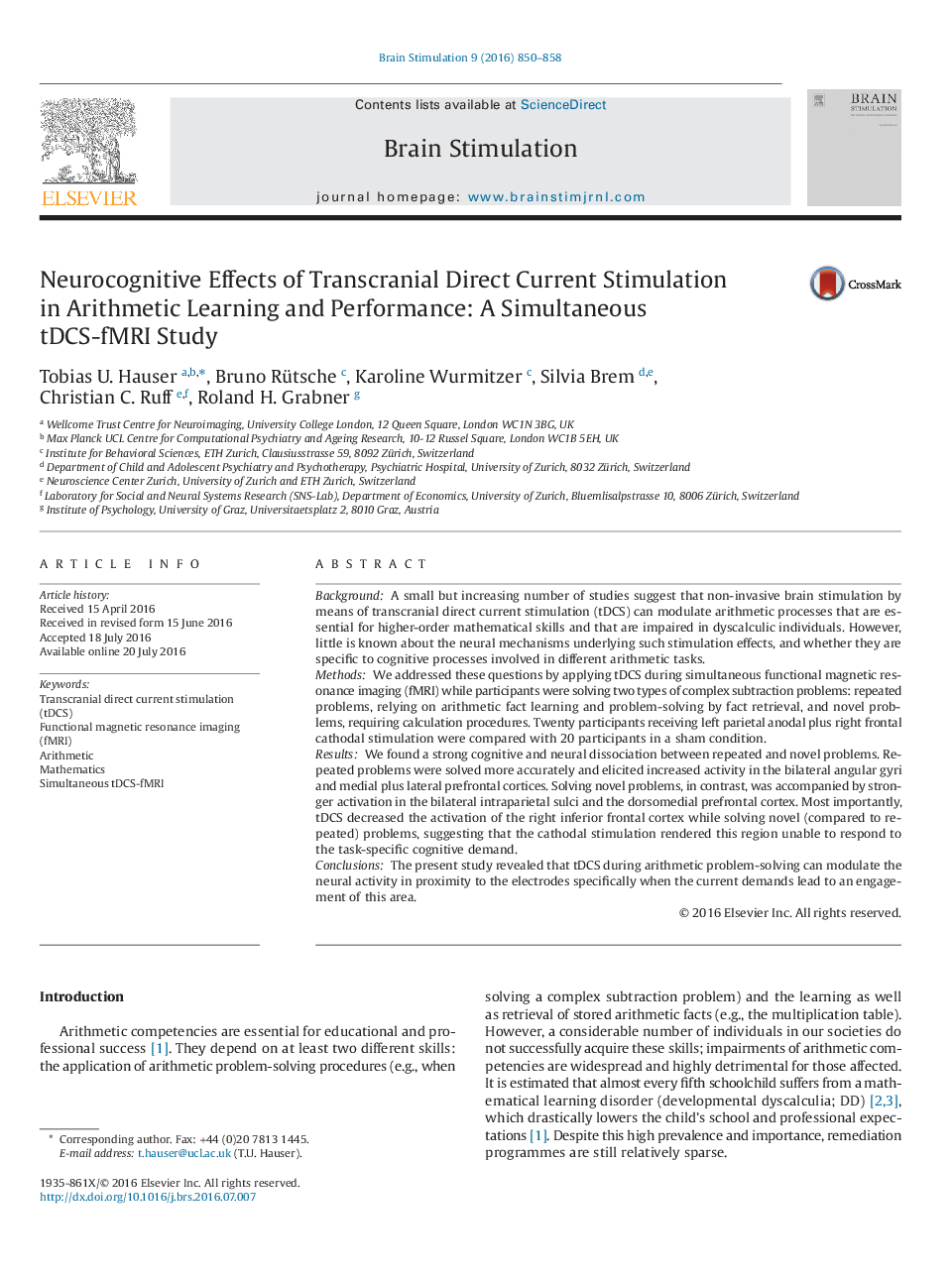| کد مقاله | کد نشریه | سال انتشار | مقاله انگلیسی | نسخه تمام متن |
|---|---|---|---|---|
| 5626887 | 1406331 | 2016 | 9 صفحه PDF | دانلود رایگان |

- Simultaneous tDCS-fMRI reveals neurocognitive mechanisms of tDCS.
- tDCS changes activation in inferior prefrontal cortex in a task-specific manner.
- tDCS alters activation to novel, but not repeated arithmetic subtractions.
- tDCS effects are found where simulations predicted strongest effects.
BackgroundA small but increasing number of studies suggest that non-invasive brain stimulation by means of transcranial direct current stimulation (tDCS) can modulate arithmetic processes that are essential for higher-order mathematical skills and that are impaired in dyscalculic individuals. However, little is known about the neural mechanisms underlying such stimulation effects, and whether they are specific to cognitive processes involved in different arithmetic tasks.MethodsWe addressed these questions by applying tDCS during simultaneous functional magnetic resonance imaging (fMRI) while participants were solving two types of complex subtraction problems: repeated problems, relying on arithmetic fact learning and problem-solving by fact retrieval, and novel problems, requiring calculation procedures. Twenty participants receiving left parietal anodal plus right frontal cathodal stimulation were compared with 20 participants in a sham condition.ResultsWe found a strong cognitive and neural dissociation between repeated and novel problems. Repeated problems were solved more accurately and elicited increased activity in the bilateral angular gyri and medial plus lateral prefrontal cortices. Solving novel problems, in contrast, was accompanied by stronger activation in the bilateral intraparietal sulci and the dorsomedial prefrontal cortex. Most importantly, tDCS decreased the activation of the right inferior frontal cortex while solving novel (compared to repeated) problems, suggesting that the cathodal stimulation rendered this region unable to respond to the task-specific cognitive demand.ConclusionsThe present study revealed that tDCS during arithmetic problem-solving can modulate the neural activity in proximity to the electrodes specifically when the current demands lead to an engagement of this area.
Journal: Brain Stimulation - Volume 9, Issue 6, NovemberâDecember 2016, Pages 850-858